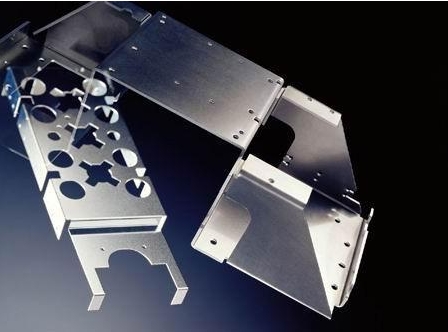Machine Learning: Prospects of Machine Learning in Sheet Metal Processing+ View more
Machine Learning: Prospects of Machine Learning in Sheet Metal Processing
+ View more
Date:2023-12-15 11:00
The concept of machine learning (ML) is gradually making its way into the field of sheet metal processing. Even though ML has been a prominent player in the more exotic fields of artificial intelligence, like robotics and computer vision, it's now time for this powerful tool to lend itself to a processing industry that forms the basis for much of our infrastructure—the sheet metal processing industry. Sheet metal processing, like all "classic" and "high volume" manufacturing, faces huge challenges in terms of process optimization, energy consumption, and, unfortunately, high scrap rates. Recycled sheet metal in some form or another is the basis of countless products around us.
Grasping the Basics of Machine Learning for Sheet Metal Processing: Lay out the essentials of machine learning and why it matters to sheet metal processing. Talk about the types of ML that could work here, like predictive maintenance, defect detection, cutting parameter optimization, and quality control.
How Machine Learning Is Used: Sheet metal processing is an area where ML finds specific application. Its role in predictive maintenance promises to reduce downtime, while its use in predictive analytics aims to improve production efficiency. Quality control is another area where ML is applied. Detecting and correcting errors before they lead to a defective product is the prime directive of any quality control process.
Pros and Cons: Look into the benefits brought by machine learning in the work with sheet metals. They are a better fit for the accuracy of the human eye than 3D CAD, which provides better fit and finish parts. They also have the potential to reduce scrap to almost zero if done right since they will increase the yield of the parts. Productivity will also become an issue in this discussion. On the downside, can we do this with enough good data? The costs keep rising. And do we have ML experts or, if not, can we afford to hire them?
Proffering actual instances of success can provide powerful persuasion. Therefore, offer genuine real-world examples that spotlight the successful use of machine learning in the processing of sheet metal. These can taken from your operating experience or that of colleagues; if you have direct industry contacts who are not averse to being quoted, you can ask them for help, too.
Look at future trends and possible advancements in machine learning for metal forming. Consider the new technologies—such as automation driven by artificial intelligence, adaptive control systems, and robots that work in collaboration with humans—and their expected impact on the industry.
Final thoughts: Describe the potentially game-changing effect that using machine learning could have on the sheet metal processing industry. Explain how these technologies could reshape the sector, make its operations even more efficient, and help improve its already high levels of innovation, productivity, and competitiveness.
Grasping the Basics of Machine Learning for Sheet Metal Processing: Lay out the essentials of machine learning and why it matters to sheet metal processing. Talk about the types of ML that could work here, like predictive maintenance, defect detection, cutting parameter optimization, and quality control.
How Machine Learning Is Used: Sheet metal processing is an area where ML finds specific application. Its role in predictive maintenance promises to reduce downtime, while its use in predictive analytics aims to improve production efficiency. Quality control is another area where ML is applied. Detecting and correcting errors before they lead to a defective product is the prime directive of any quality control process.
Pros and Cons: Look into the benefits brought by machine learning in the work with sheet metals. They are a better fit for the accuracy of the human eye than 3D CAD, which provides better fit and finish parts. They also have the potential to reduce scrap to almost zero if done right since they will increase the yield of the parts. Productivity will also become an issue in this discussion. On the downside, can we do this with enough good data? The costs keep rising. And do we have ML experts or, if not, can we afford to hire them?
Proffering actual instances of success can provide powerful persuasion. Therefore, offer genuine real-world examples that spotlight the successful use of machine learning in the processing of sheet metal. These can taken from your operating experience or that of colleagues; if you have direct industry contacts who are not averse to being quoted, you can ask them for help, too.
Look at future trends and possible advancements in machine learning for metal forming. Consider the new technologies—such as automation driven by artificial intelligence, adaptive control systems, and robots that work in collaboration with humans—and their expected impact on the industry.
Final thoughts: Describe the potentially game-changing effect that using machine learning could have on the sheet metal processing industry. Explain how these technologies could reshape the sector, make its operations even more efficient, and help improve its already high levels of innovation, productivity, and competitiveness.
Share to:
Recommend wonderful blog posts

